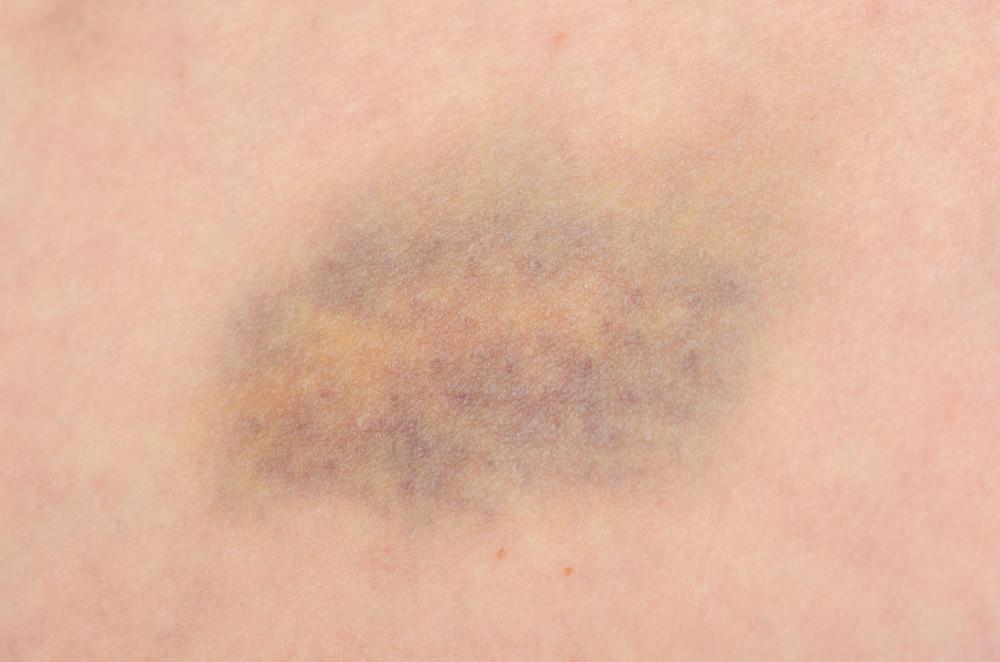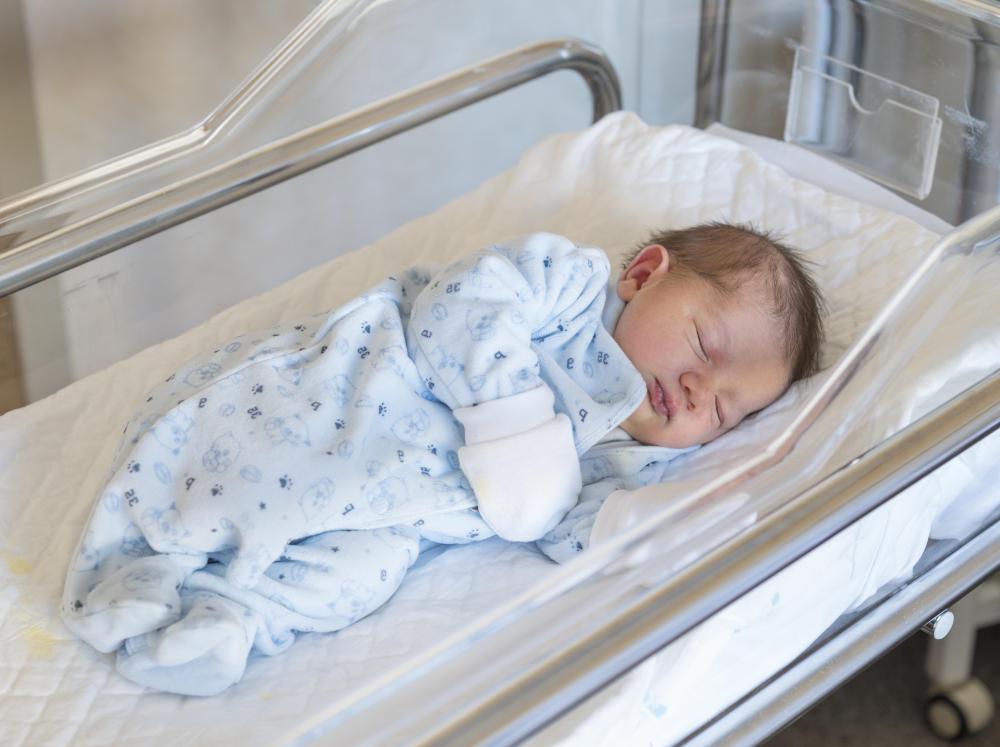At WiseGEEK, we're committed to delivering accurate, trustworthy information. Our expert-authored content is rigorously fact-checked and sourced from credible authorities. Discover how we uphold the highest standards in providing you with reliable knowledge.
What Causes Jaundice in Newborns?
Jaundice in newborns is a very common thing, and most often it is not a severe problem that requires any treatment. That being said, a physician should always address any questions or concerns about a newborn developing jaundice. Though this may do little more than to ease the parent’s mind, occasionally jaundice in newborns can indicate more serious conditions that need treatment.
When babies are born, their livers are not used to breaking down a byproduct of red blood cells, called bilirubin. It may take a few weeks or even a few months for the liver to mature enough to break down bilirubin properly, but meanwhile, free-floating bilirubin creates yellowing of the skin and often the whites of the eyes. It’s often most apparent at first in a babies face, and may occur any time from just after birth to about a week after a baby has been born. You can also note the yellowish color if you press down on the babies skin for a few seconds. If the skin remains yellow, for example at the forehead or on baby’s nose, he or she may have jaundice.

The jaundice described in the previous paragraph is called physiological jaundice. It is usually not cause for concern, and most parents will note it within a few days of a baby’s birth. Roughly half of full-term newborns get some degree of physiological jaundice and the percentage is even higher in newborns who are born prematurely.
There are other causes for jaundice, which are not quite as benign. A very rough birth, which has caused bruising to a baby or large hematomas, may cause jaundice within the first 24 hours after birth. Jaundice so early may also indicate infection or RH incompatibility. The latter two are serious matters that need to be brought to the attention of a physician right away. Usually babies are screened before leaving the hospital, but some women do leave before 24 hours has passed from the birth of their child. It’s a good idea to be watchful if you see jaundice in newborns within the first 24 hours, and to get the baby back to the doctor or hospital for testing.

If you note jaundice in a baby in his or her second week of life, where yellowing has not been present before, this also may suggest a problem. It can indicate infection, problems with the liver, certain inherited blood diseases, or the lack of certain vital enzymes. When a newborn has not been jaundiced up to that point, it’s important to contact your doctor about this new symptom, as tests may be required to determine the cause.

You should differentiate between jaundice in newborns that began when they were a few days old, and jaundice that begins when they are two weeks old. In many cases, benign physiological jaundice persists for several weeks, especially if you are breastfeeding. This does not mean breastfeeding is bad, or that jaundice that lasts for a few weeks is likely to harm your baby. It should still be mentioned to a doctor, but do note that breastfed babies are more likely to develop jaundice and that jaundice of this type can last several weeks.

Treatment of jaundice in newborns largely depends on cause. If an infant has had severe bruising, sometimes a blood transfusion is required. Another treatment that is common is light therapy, which helps to break down bilirubin at the skin level. When jaundice is more pronounced but benign, parents may go home from the hospital with a bili blanket, a little blanket with lights that the baby is swaddled in for several hours a day to help with this breakdown. Other types of jaundice may require different treatment, and in many cases mild physiological jaundice requires no treatment.
AS FEATURED ON:
AS FEATURED ON:















Discussion Comments
@empanadas - When we first left the hospital, our child's bilirubin level was I guess what they called borderline, but he was able to go home with us. They said the Jaundice might come back, which it did, and to put him in natural light in order to break down the cells or whatnot. Unfortunately, I put him outside on the patio with me for a little bit (maybe an hour or less) and he got a little pinkish... nothing too serious.
Anyway, to answer your question, the Doctor told me to put him in natural light, but indoor light works also. Even though they have special "bili lights" in the hospital, regular light works just the same I think... if they are borderline.
@babyksay - Why would you want to put your child in sunlight in the first place? I'm not quite sure I understand as the only light that should be used is the bilirubin lights, right?
@gameaddicted - We had the same issue in my house and I don't know if it's because we were in denial or we just didn't know what Jaundice really looked like. You should never put your baby outside in direct sunlight, though, as they can easily burn with their sensitive skin.
When my first daughter was born, she had jaundice. As a new parent, I couldn't see anything wrong with her - literally. She just looked kind of tan to me, even though the Doctor said she was yellowish. After about a year, I looked back at her newborn pictures when we first brought her home from the hospital and saw just how yellowy she was. You should take an instant develop picture day by day to see if your child's situation is getting any better, it might help.
Post your comments